(1) KGB. Fantastic Fiction at KGB virtual reading series hosts Ellen Datlow and Matthew Kressel present Lauren Beukes and Usman T. Malik on Wednesday, January 20 at 7 p.m. Eastern. Check back at their website or social media to get the link when it drops.
Lauren Beukes

Lauren Beukes is a South African novelist, ex-journalist and sometime documentary maker who has written five novels, a pop history, a short story collection and New York Times best-selling comics. Her novel Zoo City won the Arthur C Clarke Award, The Shining Girls is soon to be a tv show for Apple with Elisabeth Moss, and won the University of Johannesburg Prize and the Strands Critics Choice Award among others. Her new book Afterland, about a world (almost) without men, is currently in development. She lives in Cape Town with her daughter.
Usman T. Malik
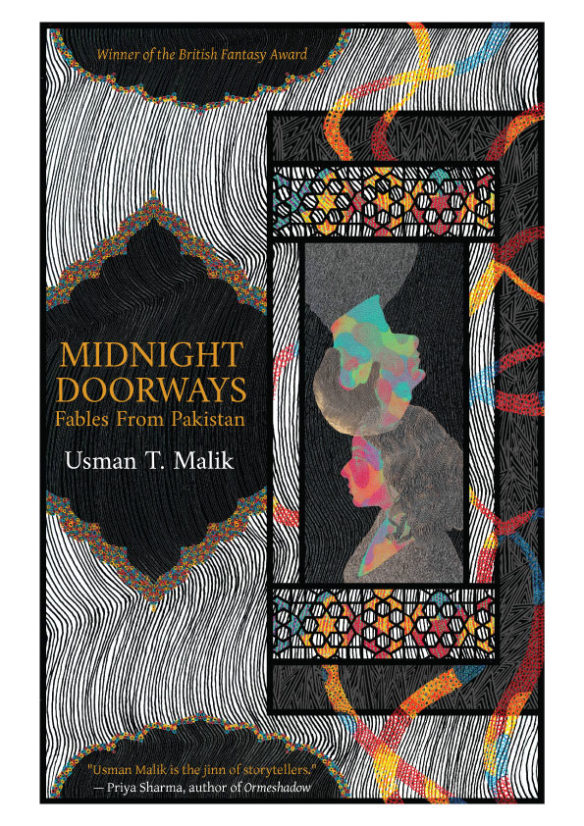
Usman T. Malik is a Pakistani-American writer and doctor. His fiction has been reprinted in several year’s best anthologies, including The Best American Science Fiction & Fantasy series, and has won the Bram Stoker Award and the British Fantasy Award. Usman’s debut collection, Midnight Doorways: Fables from Pakistan, will be out in early 2021.
(2) COULD HAVE BEEN A CONTENDER. In search of prospects to nominate for the video game Hugo, Camestros Felapton explores another game he hopes will meet his criteria of “look[ing] like they might be interesting/notable from the perspective of science fiction & fantasy as a broad genre” — “Review: Spiritfarer (Nintendo Switch)”.
…However, the game I will nominate in this category isn’t Hades but a game set in a quite different afterlife: Spiritfarer. The two games couldn’t be more different and yet both borrow Charon the Ferryman and Hades as characters from Greek mythology and both use (different) genres of game play to lead you to interact with a series of characters from whom you learn about their lives (and deaths) and your own characters back story. Spiritfarer has fewer murderous, laser firing crystal things though.
The genre of gameplay is resource management and exploration. You have a ship with a small number of passengers and you sail between islands collecting resources and improving your ship. It’s all presented as 2D animation largely moving horizontally.
(3) ELDRITCH FOR MILLIONS. IGN Southeast Asia tells “How Cosmic Horror Went Mainstream”. (You didn’t know that, did you?)
…Alternately called cosmic horror or Lovecraftian horror, this brand of story is focused on unknowable and ancient terrors. While the genre’s most iconic monster, Cthulhu, slumbers in a lost underwater city, cosmic horror just as often directly lives up to its name and comes from the cold of space or is lurking in isolated areas like Antarctica. The genre has few real heroes, mostly focusing on people who are already deeply flawed or struggling before they confront these horrors. While they may be killed, the protagonists are just as likely to be rendered insane or somehow fundamentally transformed into something as equally unknowable and terrible as the unspeakable creatures they have encountered.
But how did cosmic horror seep into the mainstream of movies, TV, and games? Let’s trace that history from D&D to True Detective to Nicolas Cage and beyond…
(4) ELLISON REFERENCE. In the discussion of other things,Scientific American’s “Hellscapes” column “A Quick Look at Underpaid Female Docs, Unethical Ethicists and Frogs with Intestinal Fortitude” ends with the following:
Speaking of hell, a study in the August 3 issue of the journal Current Biology revealed that the vast majority of members of a species of beetle, Regimbartia attenuata, perform a literally death-defying feat after being swallowed by various species of frogs. The beetle apparently swims its little heart out till it pops out of the frog’s derriere. Because, as another axiom has it, “If you’re going through hell, keep going.”
To find out whether the insect’s passage was active or passive, researchers immobilized some beetles by coating them with wax before going into the mouth of hell, or rather, frog. None of these beetles survived. To paraphrase science-fiction legend Harlan Ellison (who definitely would have come up with this experimental protocol if he’d lived long enough): they really don’t want to open their mouths, and they must scream.
(5) NO FORWARDING ADDRESS. “Is anybody out there? All the intelligent aliens in our galaxy could be dead…” – SYFY Wire distills a scientific article about the chances.
…The Milky Way has been around for billions of years. In that time, life has not only had had plenty of time to evolve to an advanced level and achieve heights of technology even our wildest sci-fi dreams couldn’t fathom, but also to destroy itself.
“We found [self-annihilation of complex life] to be the most influential parameter determining the quantity and age of galactic intelligent life,” the physicists said in a study recently published in Astrophysics of Galaxies.
There were three types of limitations for the existence of aliens that the team studied. They considered the possibilities of abiogenesis, how long it might have taken (or be taking) for an intelligent civilization to evolve, and chances of such a civilization crushing itself. Abiogenesis is the idea of life spawning from things that are definitely not alive.
(6) TODAY’S THING TO WORRY ABOUT. Here’s someone who’s theorizing is not discouraged by the preceding study: “Harvard Professor Says Alien Technology Visited Earth in 2017” – Yahoo! has the story.
…Loeb says there are two big details that suggest Oumuamua wasn’t just a comet, but rather a piece of alien technology. The first detail is the object’s dimensions, as it was determined to be “five to 10 times longer than it was wide.” Loeb argues the cigar-like shape isn’t typical for a natural space object.
But the theoretical physicist says the biggest detail that supports his theory is Oumuamua’s movement.
“The excess push away from the sun, that was the thing that broke the camel’s back,” he said.
Loeb explains that the sun’s gravitational force would cause a natural object to move faster as it approaches, and eventually push the object back, causing it to move slower as it moves away. Loeb points out that this didn’t occur with Oumuamua, which accelerated “slightly, but to a highly statistically significant extent” as it moved further and further away.
“If we are not alone, are we the smartest kids on the block?” Loeb asked. “If there was a species that eliminated itself through war or changing the climate, we can get our act together and behave better. Instead, we are wasting a lot of resources on Earth fighting each other and other negative things that are a big waste.”
(7) HEADLONG RETREAT. R.S. Benedict has posted a new episode of the Rite Gud podcast.”I talk to writer/artist Sloane Leong about SFF’s retreat into childhood nostalgia, and the beauty of mature fiction.” Listen here.
As the world looks grimmer and grimmer, Millennials and Gen Xers retreat deeper and deeper into childhood nostalgia. Adults dominate fandoms meant for children, like Steven Universe, Young Adult fiction, and My Little Pony. Within SFF, many writers, readers and editors have begun to treat all media as though it were meant for children: It must be didactic and escapist and safe. But there are still some of us who want art to treat us like adults.
In this episode, writer and artist Sloane Leong joins us to talk about the power of embracing your inner grownup.
(8) ROBERTS STILL ALIVE. People sent links to articles reporting the actress death, however, actress Tanya Roberts is still alive at this writing according to TMZ.
(9) JAEL OBIT. Artist Jael died November 17 reports Locus Online — Jael (1937-2020). The Encyclopedia of Science Fiction says Jael did covers for Baen and DAW, as well as magazines. Jael’s work received eight Chesley Award nominations between 1995 and 2002.
(10) SHELLEY OBIT. Hammer Films star Barbara Shelley has died at the age of 88 according to The Sun: ”’Queen of Hammer’ who starred in horror films and Doctor Who dies after surviving Covid”.
She also appeared in the Doctor Who episode Planet Of Fire, starring Peter Davison as the fifth Doctor.
Her agent, Thomas Bowington, said: “She really was Hammer’s number one leading lady and the technicolour queen of Hammer.
…Shelley was also known for TV roles in series including The Saint, The Avengers, The Borgias, Blake’s 7 and Crown Court, and later played Hester Samuels in EastEnders.
Robert J. Sawyer praised Shelley’s performance in Quatermass and the Pit (1967) on Facebook in which she”played a completely professional scientist, paleontologist Barbara Judd, the female lead, in one of the best science-fiction films ever made.”He also posted a great quote from Shelly:
“I adored science fiction. When I was a very little girl my father used to have all these science fiction magazines and we used to go through them together. My mind had been opened up to science fiction by my father so when I got these scripts it wasn’t `What’s this rubbish?’ It was ‘that’s interesting.'”
(11) MEMORY LANE.
1971 — Fifty years ago, Larry Niven’s Ringworld would win the Hugo for Best Novel at Noreascon I over Poul Anderson’s Tau Zero, Robert Silverberg’s Tower of Glass, Wilson Tucker‘s The Year of the Quiet Sun and Hal Clement’s Star Light. It would also win the Locus, Nebula and Ditmar Awards, and Locus would later include it on its list of All-Time Best SF Novels before 1990. It would spawn three sequel novels and a prequel series as well which was co-written with Edward M. Lerner. One film and three series have been announced down the decades but none to date have been produced.
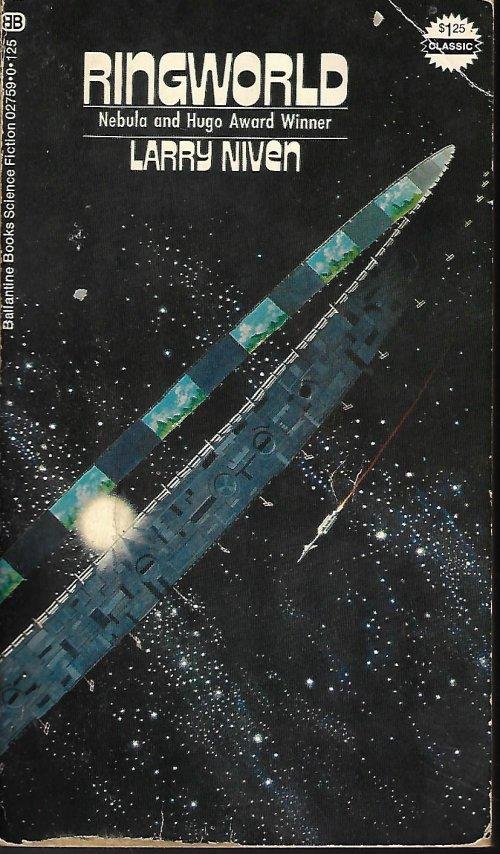
(12) TODAY’S BIRTHDAYS.
[Compiled by Cat Eldridge and John Hertz.]
- Born January 4, 1882 – P.J. Monahan. Newspaper cartoonist, illustrator in the “pulp” days (when our and other magazines were printed on cheap pulp paper). Thirty covers, twenty interiors. Here is Semi Dual, the Occult Detector. Here is Thuvia. Here is the 26 Jun 20 All-Story Weekly – weekly! How’d you like to be the editor of that? To show PJM’s range, here is the 1 Sep 12 Leslie’s, and here is a portrait of Pope Pius X. (Died 1931) [JH]
- Born January 4, 1882 – Violet Van der Elst. Twoscore short stories, half a dozen collections, for us. Starting as a scullery maid, she developed cosmetics including the first brushless shaving cream – don’t say we’ve made no progress – and grew rich; fought against the death penalty, threw her money and her mind into it, lost both, barely lived to see it abolished. (Died 1966) [JH]
- Born January 4, 1890 — Malcolm Wheeler-Nicholson. Creator of the modern comic book by publishing original material in the early Thirties instead of reprints of newspaper comic strips. Some years later, he founded Wheeler-Nicholson’s National Allied Publications which would eventually become DC Comics. (Died 1965.) (CE)
- Born January 4, 1904 – Dale Ulrey. Four covers, a dozen interiors. Also a comic-strip artist, notably Apple Mary, famous during the Depression, still running today as Mary Worth. Here is her Wizard of Oz. Here is an interior for Jaglon and the Tiger Fairies. (Died 1989) [JH]
- Born January 4, 1927 — Barbara Rush, 94. She won a Golden Globe Award as the most promising female newcomer for being Ellen Fields in It Came From Outer Space. She portrayed Nora Clavicle in Batman, and was found in other genre programs such as the revival version of Outer Limits, Night Gallery, The Bionic Woman and The Twilight Zone. (CE)
- Born January 4, 1930 – Ruth Kyle. Founding member of the Lunarians (New York club, famous in song and story). Hard-working Secretary of NYCon II the 14th Worldcon; married its chairman Dave Kyle; his tale of their honeymoon flight to Loncon I the 15th is here. Good cook, gracious hostess. Part of an adventure I had with Dave, see here (bottom of three). (Died 2011) [JH]
- Born January 4, 1933 – Phyllis Naylor, age 88. A dozen novels for us; a hundred thirty all told; some 2,000 articles. Newbery Medal. Sequoyah Children’s Book Award. Mark Twain Readers Award. William Allen White Children’s Book Award. Kerlan Award. “What spare time? If I’m not writing, I’m thinking about writing.” [JH]
- Born January 4, 1946 — Ramsey Campbell, 75. My favorite novel by him is without doubt The Darkest Part of the Woods which has a quietly building horror to it. I know he’s better known for his sprawling (pun full intended) Cthulhu mythology writings but I never got into those preferring his other novels such as his Solomon Kane movie novelization which is quite superb. (CE)
- Born January 4, 1958 — Matt Frewer, 63. His greatest role has to be as Max Headroom on the short-lived series of the same name. Amazingly I think it still stands thirty-five years later as SF well crafted. Just a taste of his later series SF appearances include playing Jim Taggart, scientist and dog catcher on Eureka, Pestilence in Supernatural, Dr. Kirschner in 12 Monkeys and Carnage in Altered Carbon. His film genre appearance list is just as impressive but I’ll single out Supergirl, Honey, I Shrunk the Kids, The Stand, Monty Python’s The Meaning of Life (oh do guess where he is in it) and lastly Night at the Museum: Secret of the Tomb, a series of films that I really like. (CE)
- Born January 4, 1960 — Michael Stipe, 61. Lead singer of R.E.M. which has done a few songs that I could argue are genre adjacent such as “Losing My Religion”. But no, I’ve got him here for being involved in a delightful project called Stay Awake: Various Interpretations of Music from Vintage Disney Films. Lots of great songs given interesting new recordings. His contribution was “Little April Shower” from Bambi which he covered along with Natalie Merchant, Michael Stipe, Mark Bingham and The Roches. Fun stuff indeed! (CE)
- Born January 4, 1981 – Sarah Crossan, age 40. Two books for us, seven others. Has read four each by Jane Austen and Virginia Woolf, two by George Eliot. [JH]
- Born January 4, 1985 — Lenora Crichlow, 36. She played Cheen on “Gridlock”, a Tenth Doctor story. She also played Annie Sawyer on the BBC version of Being Human from 2009 to 2012, and she appeared as Victoria Skillane in the “White Bear” episode of Black Mirror. (CE)
- Born January 4, 1985 – Lorenz Hideyoshi Ruwwe, age 36. A dozen covers. Here is Desert Stars. Here is The Sentinel. Here is Omni. Here is his page at ArtStation. [JH]
(13) THE SIGN OF THE Z. In the Washington Post, Michael Sragow notes the centennial of THE MARK OF ZORRO, the first Zorro movie. He notes that both Batman creators Bob Kane and Bill Finger and Superman creators Jerry Siegel and Joe Shuster say that Zorro’s twin identity as the masked crimefighter and the foppish Don Diego as a precursor to Batman and Bruce Wayne and Superman and Clark Kent. In addition, Sragow sees Zorro’s secret lair as a precursor of the Batcave and Lolita Pulido’s ditching Don Diego for Zorro as Lois Lane favoring Superman over Clark Kent. “On Zorro’s 100th birthday, the father of swashbucklers and superhero movies is still relevant”
…Like Tennyson’s Sir Galahad, Zorro has the strength of 10 because his heart is pure. He’s also irreverent and mischievous. His sparkle exudes hipness: He embraces the New World’s egalitarian ethos while his enemies defend the feudal past.
Zorro lifted spirits in the 1920s. In the 2020s, his ebullience can generate ecstatic highs.
During Fairbanks’s previous run as the parody hero of contemporary action comedies like “His Picture in the Papers,” fans came to think of him as “Doug,” a tribute to his offhand elegance — like Fred Astaire’s, a triumph of talent and willpower. Doug transports this knockabout grace into “The Mark of Zorro.” With his light heart and “can-do” demeanor — qualities the world embraced as quintessentially American — Zorro soon dominated action-film iconography. Cinema would never be the same.
(14) ZOOMIN’ DOWN THE ROAD. “Movin’ Right Along With Kermit The Frog and Fozzie Bear” on YouTube has Kermit and Fozzie welcoming the new year with dreams of a road trip and showing they know how to use Zoom.
(15) THANKS, MY GOOD COUNTRYMAN. James Davis Nicoll surveys “Canadians in SF as Written by Non-Canadians” at Tor.com. (Is that allowed?)
Canada! Perhaps best known to fans of British soap operas, for whom it serves as that mysterious land to the west to which characters vanish after their purpose on the show has been served. Of course, all that is needed to learn far more about Canada than you would ever need or want to know is to get trapped in a conversation with a Canadian, uninvited exposition concerning their homeland being as natural to the average Canadian as it is any given inhabitant of a fictional utopia confronted by a woken sleeper from the pre-utopian past.
One might reasonably expect that most SF touching on Canada was written by Canadians and the Canadian-adjacent. Perhaps it is. Quite a lot of it is not. Here are five examples of Canada and Canadians in science fiction, as seen by foreign eyes.
First on the list is Bob Shaw, who’s challenging because he lived and worked in Canada for a period.
(16) HOPE HE GETS HIS MD. [Item by Mike Kennedy.] The first baby of 2021 in one Alabama town has a possibly-unique name, Anakyn Gene Strange. Yeah, they changed the spelling of the first name a bit, but wouldn’t it be lovely if the young lad went into medicine. Think of it — Dr. Anakyn Strange. “‘The Force is Strong’ with Florence’s first baby in 2021”
Star Wars fans immediately know the reference when hearing the name Anakyn.
While it may not be spelled the same as it was in the series, Hope and Dusty Strange used the name on Florence’s first birth of 2021. Anakyn Gene Strange was born at 1:04 a.m. on January 1 at North Alabama Medical Center.
According to our news partners at the Times Daily, Anakyn was 5 pounds, 12 ounces and was 19 3/4 inches long with brown eyes and curly brown hair.
“There actually was a feeling of relief because 2020 was a horrible and challenging year,” she said. “It was the most pure way to start out the year.”…
(17) RAVENCON ANTHOLOGY KICKSTARTER. Michael D. Pederson, RavenCon 2022 chair, explains:
Being an April convention, we were forced to announce this year’s [2020] cancellation three weeks before the convention. Needless to say, after having spent 11 months buying supplies and paying fees for the con we didn’t have much (read: any) capital left after refunding the vendors. And we still needed to refund about a third of our attendees that wanted money. And now that we’ve had to cancel for 2021 as well, we’re really stuck for funds. So, we created an anthology, with story donations coming from many of our regular programming guests as well as a few of my old Nth Degree contributors. We’re using the anthology to raise funds through Kickstarter. We funded the entire project on our first day and hit our first stretch goal a week later. We’re working on a second stretch goal and expect to announce a third stretch goal later this week.
You can find the fundraiser at: CORVID-19 — Kickstarter. The stories in CORVID-19: A RavenCon Anthology are:
- “Windows to the Soul” by Danielle Ackley-McPhail
- “Raven’s Sacrifice” by Heather Ewings
- “The Cruelest Team Will Win” by Mike Allen
- “Jenny” by Debbie Manber Kupfer
- “Daughter of the Birds” by Maya Preisler
- “Kvetina and the Crows” by Rhys Schrock
- “Corvus Monitus” by Cass Morris
- “If the Moon is Real” by Samantha Bryant
- “Life in a Moment” by James Maxey
- “Crows’ Feet” by Diana Bastine
- “A Warning of Crows” by Jennifer R. Povey
- “Wet Birds” by Elizabeth Massie
- “Heart Truth” by Jenna Hamrick
- “Table for One” by Joan Wendland
- “Dominion” by Margaret Karmazin
- “The Gore-Crow” by Meryl Yourish
- “The Song of the Raven” by Toi Thomas
- “Fledging” by Kathryn Sullivan
- “Feather Fall” by Kara Dennison
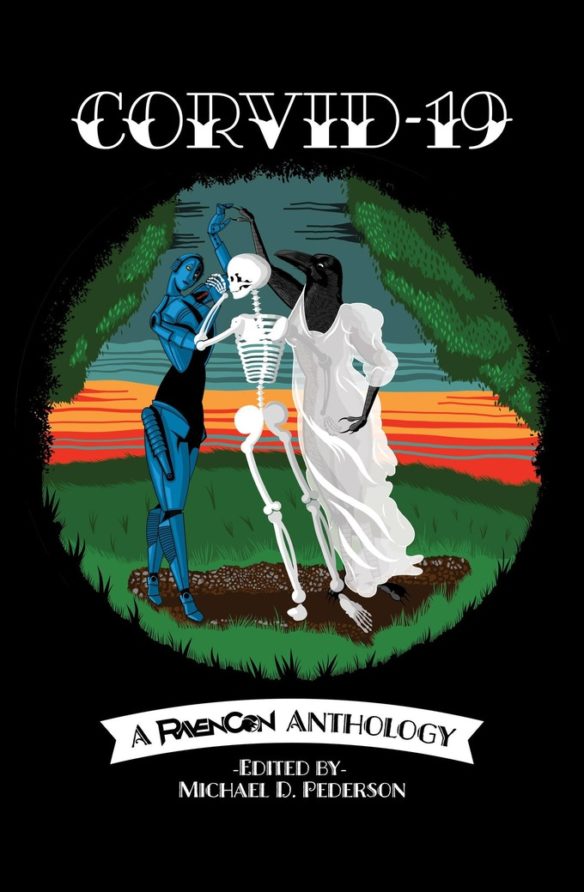
(18) ESCHEW SURPLUS CONSONANTS. A whole collection of tweets from people who seem qualified to join File 770’s crack proofreading staff: “People Who Don’t Know How to Spell ‘Cologne’ Are Hiralous” at Sad and Useless.
Who would have thought that “cologne” is such a complicated word to spell correctly? Or it just might be that many people really are enjoying the smell of large intestine…
(19) LONG PLAYING. And long ago. This interesting discovery is available at Archive.org – “A Child’s Introduction To Outer Space: Jim Timmens” (1959) – with songs performed by The Satellite Singers, and dramatic readings, and a credit on the album cover to Scientific Advisor Willy Ley who won one of the first Hugos in 1953.
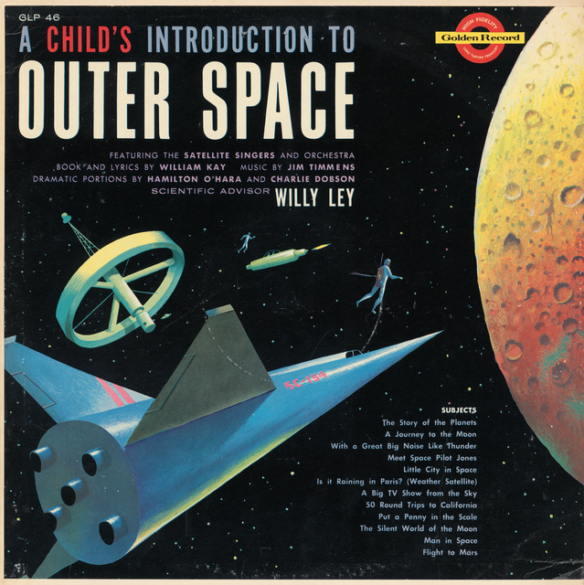
(20) VIDEO OF THE DAY. In “Wonder Woman 1984 Pitch Meeting” on Screen Rant, Ryan George says that the reasons why Steve Trevor appears in Wonder Woman 1984 have really creepy implications and that it’s highly unlikely that Wonder Woman could make an escape from the Smithsonian by stealing a fully fueled airplane from the Air and Space Museum.
[Thanks to John Hertz, JJ, Cat Eldridge, Michael Toman, Martin Morse Wooster, John King Tarpinian, Mike Kennedy, Jeff Smith, Darrah Chavey, and Andrew Porter for some of these stories. Title credit goes to File 770 contributing editor of the day Anna Nimmhaus.]

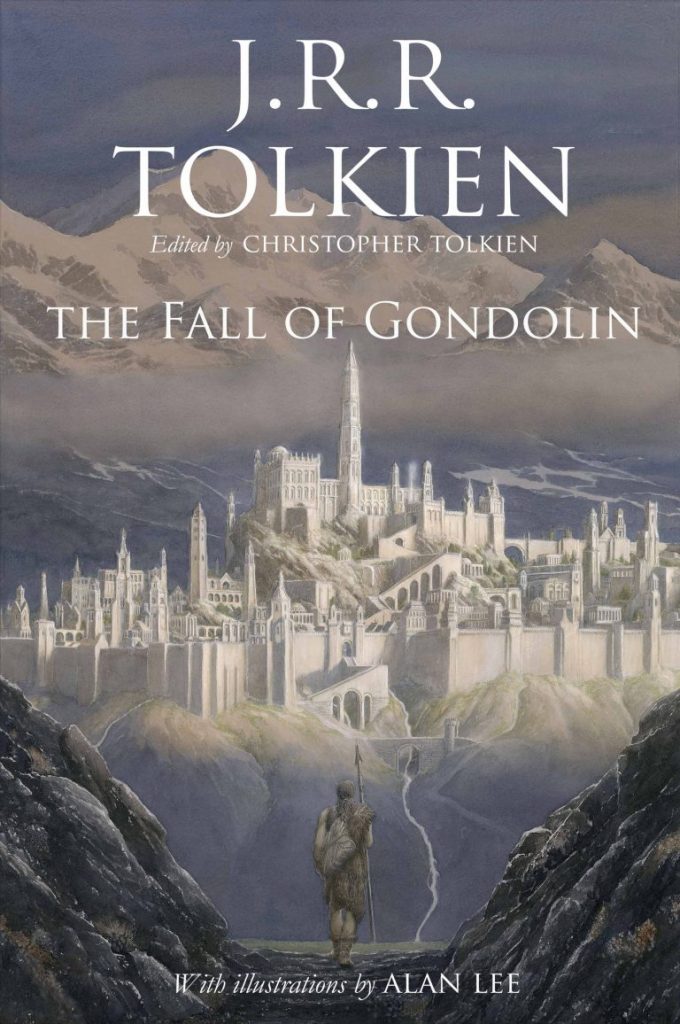

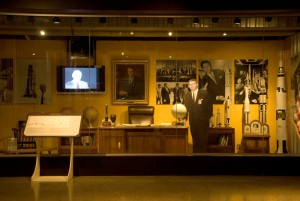

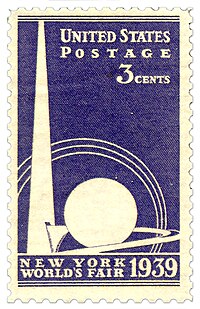 To honor the 50th anniversary of the first Worldcon, the
To honor the 50th anniversary of the first Worldcon, the  Milton Rothman, chair of the 1953 Philadelphia Worldcon that invented the Hugo Awards, said in his article for the Noreascon Program Book that they had a lot of trouble finding someone to make the Hugo rockets. “It was Jack McKnight who came to the rescue. An expert machinist, he turned
Milton Rothman, chair of the 1953 Philadelphia Worldcon that invented the Hugo Awards, said in his article for the Noreascon Program Book that they had a lot of trouble finding someone to make the Hugo rockets. “It was Jack McKnight who came to the rescue. An expert machinist, he turned 